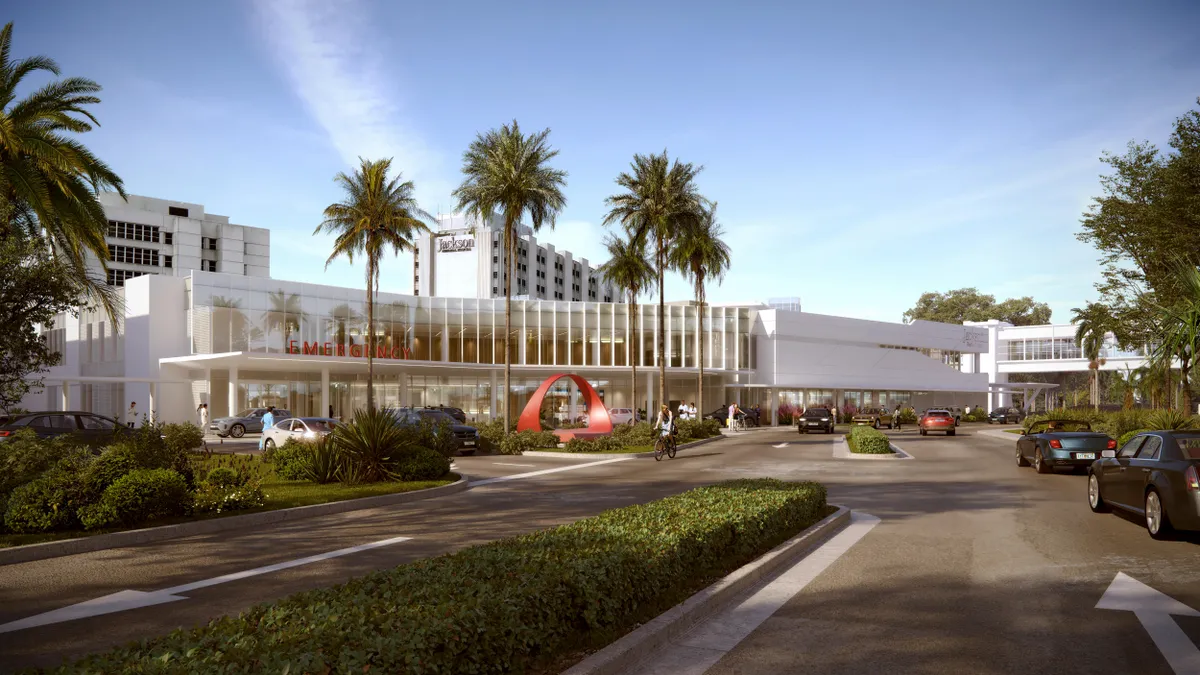Daimon Perez got his career started in his native Puerto Rico as a laborer.
Now the environmental health and safety director for Skanska USA Building in Florida, Perez says he knows that decades of work from laborer to leader equip him with unique skills to engage with employees on the jobsite.
It also means he’s accustomed to working in high-heat conditions, and he knows how important heat safety is.
This summer, Perez tried out the MX3, a hydration testing kit from MX3 Diagnostics, on three jobsites in his region. The system tests saliva to measure hydration levels. But Perez said the reasons he used it were for health as much as for education.
Here, Perez talks with Construction Dive about the use of the tester and the value of his jobsite experience.
The following has been edited for brevity and clarity.
CONSTRUCTION DIVE: What can you tell me about this hydration tester?
DAIMON PEREZ: We were in the process of looking into the OSHA standard on heat stress and getting our people the right tools. We’ve had EMT people come on a couple of our projects as a preventative measure, and their diagnosis sometimes was based on the opinion of the technician. So we found this technology that uses real-time readings and it was fascinating to me.
Right now we have three units in three projects around the state. One in Miami, the Jackson Health System emergency room. We have another one in Lakeland, for Orlando Health, and we have another one for Lee Health in Fort Myers.
So basically this machine works very similarly to a glucose machine that they take a blood sample and measure. It’s similar but with saliva. So we put in a strip on the machine, we ask the employee to get some saliva on his tongue, and immediately the machine is giving to us the result: If the person is hydrated, dehydrated, all the levels.
They have a color code with the reading so they can give real-time information. From there, our EMTs can have a better diagnosis.
How often are you using it to test workers?
We are using it right now for wellness, I would say. We have people walking the field creating more consciousness about hydration in construction. Many people start their day by drinking an energy drink or a lot of coffee. So we are trying to make sure that people properly hydrate.
Right now we are using it on a weekly basis. We check the heat index app, and when we receive this alert that we will be in a really humid area in Florida, we are more often carrying the machine.
It's a handheld, small device that you can carry around. So each individual puts it on their tongue, and the used strip we're putting in the biohazard bag and just moving around.
You started as a laborer in construction. How does that help you talk with workers on the jobsite?
It's really good for me to connect with people, and especially here in Florida, the Hispanic community working in construction is very high. Getting that opportunity to connect with them, I said, “Hey, I was there. I know how to do the trench. I know how hard you need to work.”
The laborers are the people that do the most work in my opinion. Not only excavation and trenches, these people do a lot of things. So I connect with them in a very easy way.

I have empathy. “I was there, I know what you are doing. I want to help you to get better working conditions.” So this is part of that: getting them the education.
Many trade partners or temporary labor companies don't do proper training. So when we have new people coming in, they go through orientation and this topic is specifically one of the chapters that we discuss, heat stress and how to identify the symptoms. Because they're the first one that can identify the symptoms. So if they know, we can address it faster.
Do you have a long-term vision for the use of the MX3 devices?
So right now, as I mentioned, we have three units, but my ambition personally is to get one in each of our active projects here in Florida. Every project right now has a first aid cabinet and an automatic external defibrillator unit. So why not have a hydration test?
How has it been working in the Florida heat this summer?
Well, the area right now in Miami is really humid because we have a thunderstorm every night, so it's very hot and humid. I was working in Washington, D.C., when I left Puerto Rico, and the heat in D.C. was completely different. To me at least, it's really dry by comparison.
I’m from a tropical island, you know, I’m used to it. But we see people who have experienced some kind of heat stress symptoms. So we have to be ready to address the situation immediately.













